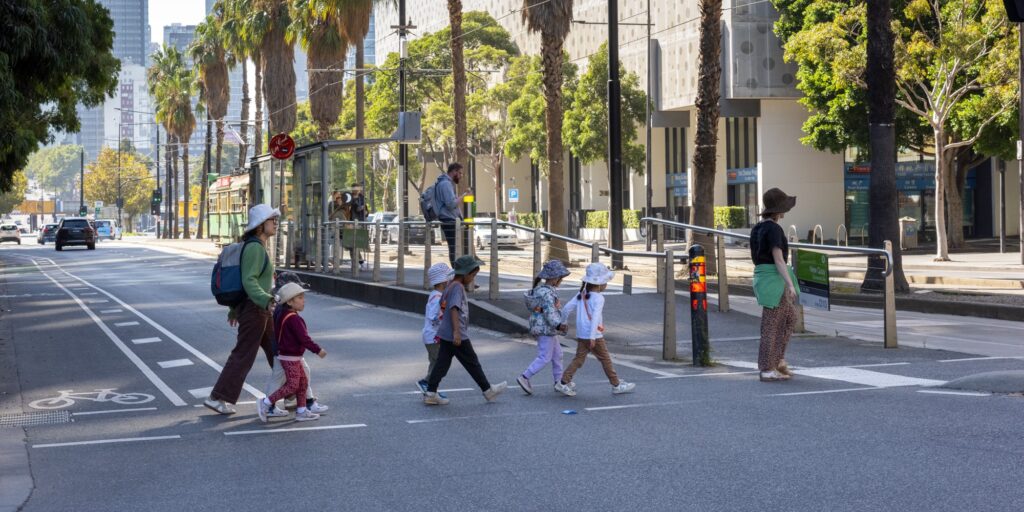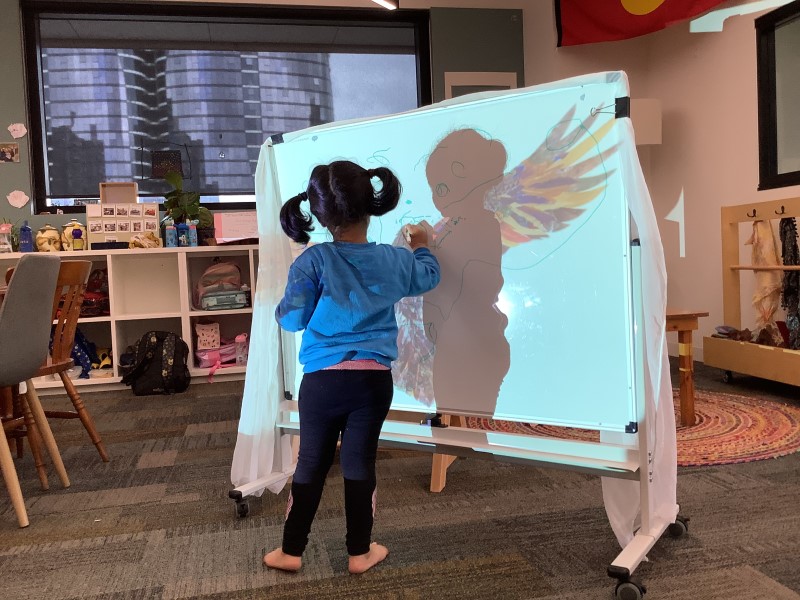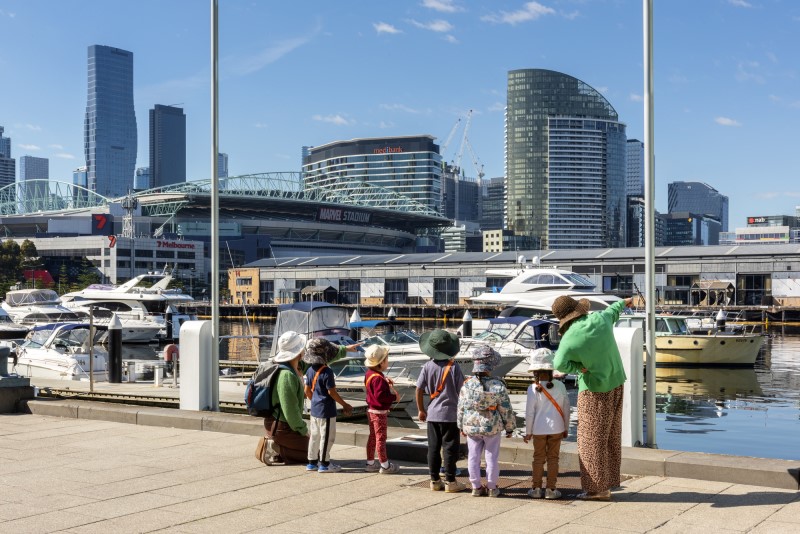At Gowrie Docklands Kinder, children are finding a voice and a strong sense of community.
As a sessional kindergarten within Melbourne’s CBD, the GDK community is richly diverse and often transient, with many families having recently migrated to Australia.
Educational Leader Liz Ong says for most, GDK is the first community they encounter in Australia. “They’re single unit families here and no longer have the support of extended family and community that they had in their home country,” Liz says. “Over 80 per cent of the children within our programs speak multiple languages, and many are learning English for the first time.”
Creating a sense of stability and community is a central aim at GDK, and Liz says it starts with championing and valuing the children’s first languages. “Rather than having children try to fit into a different context, we want to preserve that link to home and ensure the value of each child’s true self is maintained,” she says. “We do this by honouring their culture and their individual voice, and creating the conditions where children can take pride in themselves and the views of others.”
Liz says some of the key conditions include:
1. Ensuring children feel safe, heard and loved.
In each room, educators have developed responsive routines, mealtimes, and rest/relaxation, with the flexibility to support children’s agency and interdependence. “Our educators create calm, relaxed environments where children are encouraged to exercise agency,” Liz says. “Their social and emotional learning needs are attended to in an equitable manner.”
2. Listening and respond to children’s play and curiosities.
‘Listening’ to the way children engage with materials allows educators to respond in meaningful ways. “In one of our 3-year-old programs, many of the children have a love of collecting animals,” Liz says. “We are channelling this through First Nations knowledges to create inspiring learning experiences with Bunjil (wedgetail eagle) and Waa (crow).”
Liz says the depth and richness of the children’s learning is made possible because their voices are heard. “When we make this learning visible to children, the pride they experience is palpable,” she says.
3. Empowering children to become influential decision makers
Classroom agreements within the programs help capture children’s voice through shared understandings. “Teachers and children become active co-creators through respectful dialogues, as agreements are returned to, extended, or adjusted as necessary,” Liz says.
The aim of this is to empower children to be active citizens of the world, as they hold each other accountable for their actions through ideas that make them feel safe, secure and supported.
4. Empowering children to take pride in being active citizens within the community
Children are encouraged to explore their right to be responsible citizens within the community where they live and learn. Liz says this is being pursued through an inquiry project on how the children can show their local community that the waterfront (NewQuay Promenade) is a safe learning space for them. “Children have been out and about along NewQuay, making their presence visible, gathering information and developing ideas about how they share this important learning with the Docklands community,” Liz says.
5. Honouring children’s right to contribute to decisions about matters that affect them
At GDK, children are invited to voice their input into the Quality Improvement Plan so our team can work on issues that directly impact the children and their learning. “Through multiple avenues of communication, educators support children to understand parts of the plan that are relevant to them,” Liz says. “Educators respect children’s unique views and value their contribution.”
Finding voice through culture
Key cultural celebrations, such as Lunar New Year, Holi and Eid, are an ideal starting point for nurturing children’s voices and community connections at GDK.
Liz says recent Holi celebrations were a great example of exploring the above key conditions.
“Different programs chose to honour the Holi festival through a variety of explorations that were meaningful to their particular group,” Liz says. “This was initiated by several children who came to kinder sharing their experiences of festivities that took place during the weekend.”
One group explored the tradition of playfully splashing coloured powders on one another, leading to discussions around the importance of respecting each other’s personal space. Another group decided to create a large, vibrant artwork together.
“Families enthusiastically contributed coloured powder and shared pictures of their Holi experiences,” Liz says. “Delving deeper into the children’s perspectives, the team explored the significance of the coloured powders within the context of their family traditions.”
This recognition of familial participation in the festival prompted GDK to invite families to join the program. “The children actively contributed to planning the celebration, creating posters, discussing the logistics and the colours to be used,” Liz says. “This approach recognised all children’s engagement in the experience in different ways, while promoting identity exploration, fostering a sense of community, and being active co-constructors.”




